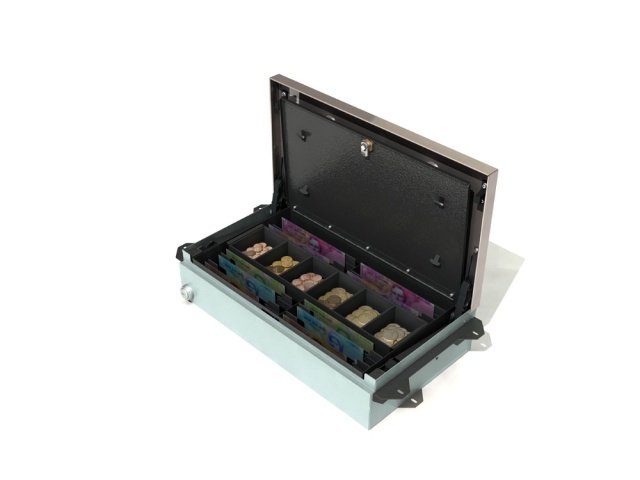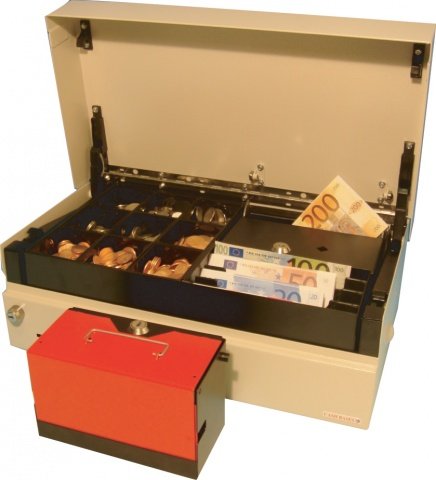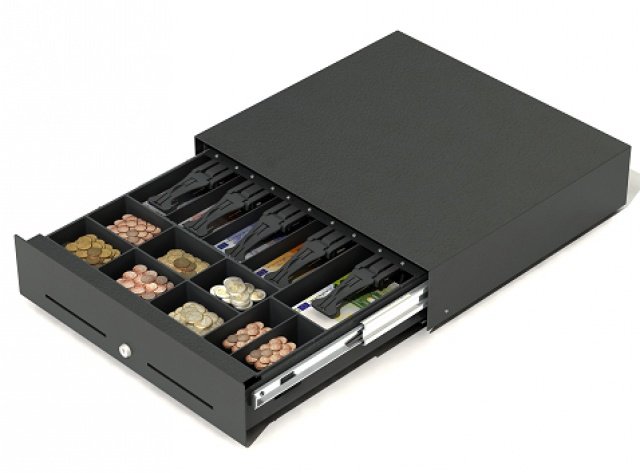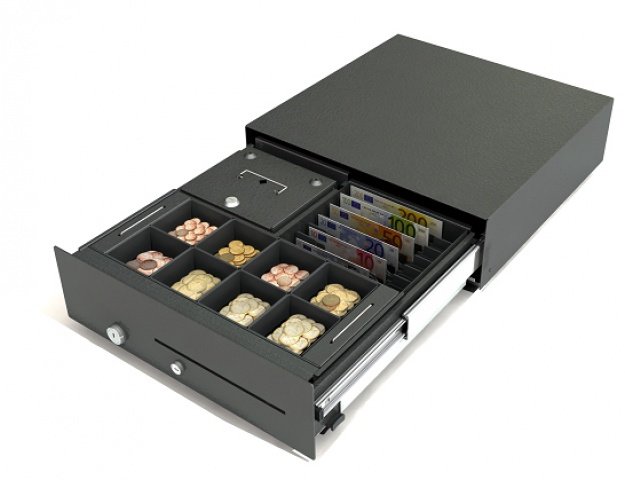Cash drawers are essential components of point-of-sale (POS) systems used in retail and hospitality environments to securely store cash, coins, checks, and other valuable items during transactions. These drawers are typically integrated with cash registers, POS terminals, or receipt printers and provide a secure and organized storage solution for managing cash transactions. Here are some key features and aspects of cash drawers:
1. **Construction and Design**: Cash drawers are typically made of durable materials such as steel or heavy-duty plastic to provide strength, security, and longevity. They are designed to withstand the rigors of daily use in busy retail environments and may feature reinforced corners, locking mechanisms, and smooth-glide rails for reliable operation.
2. **Size and Configuration**: Cash drawers come in various sizes and configurations to accommodate different cash-handling needs and space constraints. Standard sizes include compact drawers for small countertops or mobile setups and larger drawers for high-volume cash transactions. Cash drawers may feature adjustable coin and bill compartments to organize currency denominations and optimize storage capacity.
3. **Drawer Layout**: The layout of a cash drawer typically consists of compartments or trays for organizing coins, bills, checks, and receipts. Coin compartments are divided into individual slots or cups for sorting and counting coins of different denominations, while bill compartments feature adjustable bill clips or dividers to separate bills by denomination and maintain orderliness.
4. **Locking Mechanisms**: Security is a critical aspect of cash drawers, and most models are equipped with locking mechanisms to prevent unauthorized access and deter theft. Common locking mechanisms include key locks, manual locks, electronic locks, and combination locks. Some advanced models may feature keyless entry or biometric authentication for added security.
5. **Interface and Connectivity**: Cash drawers are typically connected to a POS system or receipt printer via a cable interface, such as USB, serial (RS-232), or Ethernet. The interface allows the cash drawer to communicate with the POS software or printer and trigger the opening of the drawer automatically during transactions. Some cash drawers feature multiple interface options to accommodate different POS configurations.
6. **Integration with POS Systems**: Cash drawers are designed to integrate seamlessly with POS systems, cash registers, and receipt printers from various manufacturers. They often come with standardized interface protocols and drivers that ensure compatibility with popular POS software platforms and hardware configurations. Integration with POS systems enables automatic opening of the drawer when a transaction is completed and provides real-time reporting of cash transactions.
7. **Durability and Reliability**: Cash drawers are built to withstand frequent opening and closing cycles and are tested for durability and reliability under demanding usage conditions. High-quality components, precision engineering, and robust construction ensure smooth operation and long-term performance, minimizing downtime and maintenance costs.
8. **Accessories and Options**: Cash drawers may come with additional accessories and options to enhance functionality and convenience. Common accessories include under-counter mounting brackets, security lids, till covers, and extra keys. Optional features may include cash counting scales, counterfeit detection devices, and remote monitoring capabilities for enhanced security and efficiency.
Overall, cash drawers play a crucial role in cash management and POS operations, providing a secure and organized storage solution for cash transactions in retail, hospitality, and other commercial environments. By choosing the right cash drawer based on their specific needs, businesses can improve efficiency, accuracy, and security in handling cash transactions and enhance the overall customer experience.
Cash Drawers
Cash Drawers
Cash Drawers
Cash Drawers
Cash Drawers
Cash Drawers
Cash Drawers











